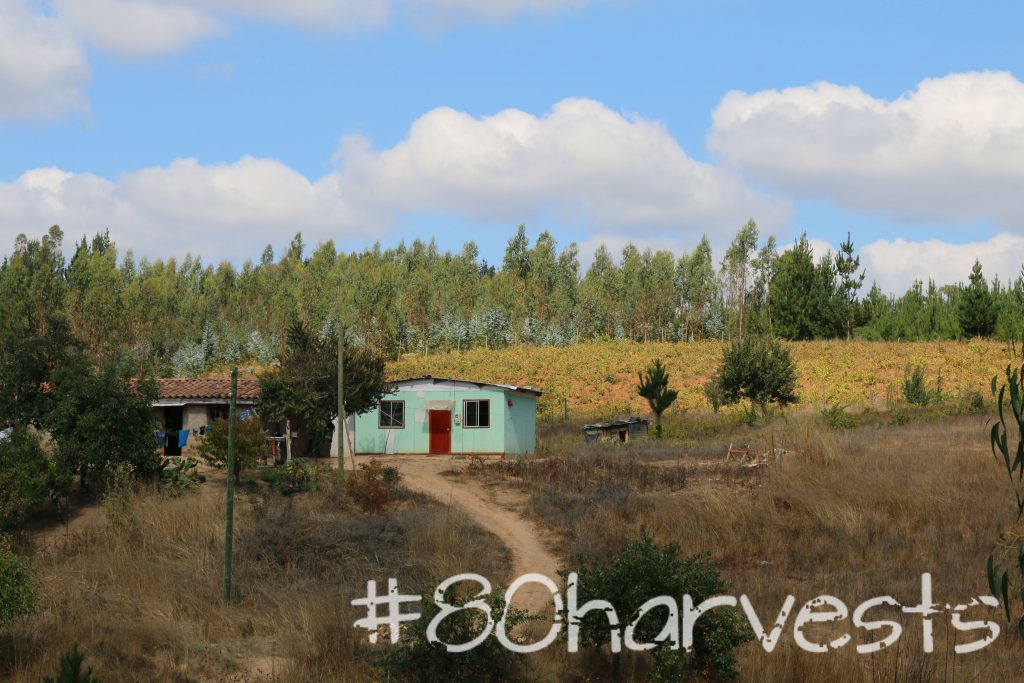When we were selecting which Chilean wine regions and harvests to cover, I can tell you it was a tough choice. Why? Because Chile is extremely diverse.
Chile’s wine regions span over 1700km from beyond the Lakes Region of Chile in Patagonia, where you’ll find some of the world’s southernmost vineyards up to the Atacama desert in the far north of Chile, which is the driest desert on the planet. But Chile is not as simple as north to south.
Arguably more important than north to south in Chile is east to west. Chile may be skinny (its average width is just 180km compared to its impressive 4300km length) but it is fat with diversity. The Andes mountains tower along the whole eastern edge of the country. This is one of the highest mountain ranges in the world, and the largest above water. The Andes have a significant impact on the nearby wine regions and many of Chile’s key regions are either in the foothills of the mountains or planted on the slopes, some of them reaching an altitude in excess of 2000m.
The middle of Chile, which is known as the Central Valley, is a warm agricultural basin. It is called the garden of Chile for good reason, as almost anything can grow here – from quinoa and avocadoes to citrus fruit and vegetables. This is also home to many of Chile’s warmer wine regions.
All along the western frontier is the bracingly cold Pacific Ocean. The cold Humboldt current has a profound impact on the coastal wine regions. These areas have more breezes, often experience morning fog and generally have lower overall temperatures, which make them South America’s only cool maritime climate wine regions.
Even within one ‘region’ you can span across three different categories: take Aconcagua for example, parts are coastal, parts are central and parts are Andean.
Another dimension to add to Chile’s wine diversity is the age of the vineyards: some are very old, with 200 year old vines, and others are brand new, as Chile continues to plant in new pioneering regions on a yearly basis.
So how did we pick where to take you on 80 Harvests? Well, we picked four harvest regions – to reflect Chile’s diversity and different attributes:
Coastal: San Antonio

When it comes to Chile’s coastal regions, there isn’t anywhere much cooler than San Antonio. Although neighbouring Casablanca was the first coastal region in Chile to be planted in the 80s, San Antonio went one step further – planting as close as 4km from the coast! We picked San Antonio for one of our 80 Harvests to be able to show you what makes coastal Chile so unique.
- San Antonio in an infographic
- Extreme coastal vineyards in Chile with Felipe Marín
- Casablanca vs San Antonio: The differences between the regions, with Julio Bastías
- More coming soon!
Andes: Puente Alto, Maipo

Some of Chile’s most renowned brands come from this uber-famous valley in the hilltops of Maipo. We speak to the top specialists and break open the Andes terroir of Puente Alto and the secrets of the most expensive wines in South America.
- Puente Alto in an infographic
- 360 vineyard tour of Puente Alto with Michel Friou
- The terroir of Puente Alto with Francisco Beattig
- Almaviva wine & vintage variation with Michel Friou
- Tasting Viñedo Chadwick with Francisco Beattig
- Michel Friou’s favourite wine pairing for Almaviva
- More coming soon!
Central Valleys: Apalta

The most famous area within the Central Valley is Apalta. But there are various sides to Apalta. There is the side in Colchagua, and then there is the other side – in Cachapoal. We discover both and uncover the secrets to this wine region’s fame.
- Apalta in an infographic
- Aurelio Montes on Apalta’s terrain and wines
- An essential guide to Apalta with Lapostolle’s Andrea Leon
- Starting a vineyard from zero with Patrick Valette at VIK
- More coming soon!
Old vines: Itata

Chile is filled with beautiful old vines, you just need to travel south to discover them! We picked Itata as our region to show Chile’s surprising supply of old vines. Join us as we venture into the southern secrets of the country to learn more about the rediscovery of old varieties and what potential this historical region has to change the future of South American wine.
- Itata in an infographic
- Winemaker Marcelo Retamal on what makes Itata unique and rescuing old traditions
- Enzo Pandolfi on life and culture in Itata
- Old and new vines in Itata with Francois Massoc
- Agronomist Renan Cancino on the particularities of the terroir (español)
- More coming soon!
Bonus Tracks!
There is just too much in Chile that we wanted to cover… so here are some bonus tracks to our visit:
- Chile on a plate! Chef Rodrigo Acuña at VIK prepares us something representative of Colchagua’s cuisine and ingredients
- The new Chile and future of Chilean wine with Pablo Morandé
- A tour of Chile’s wine regions through Syrah with Andrea Leon
- Mountain Sauvignon Blanc and different styles with Francois Massoc
- Moving into fresher styles in Chile’s valleys with Juan Alejandro Jofré

